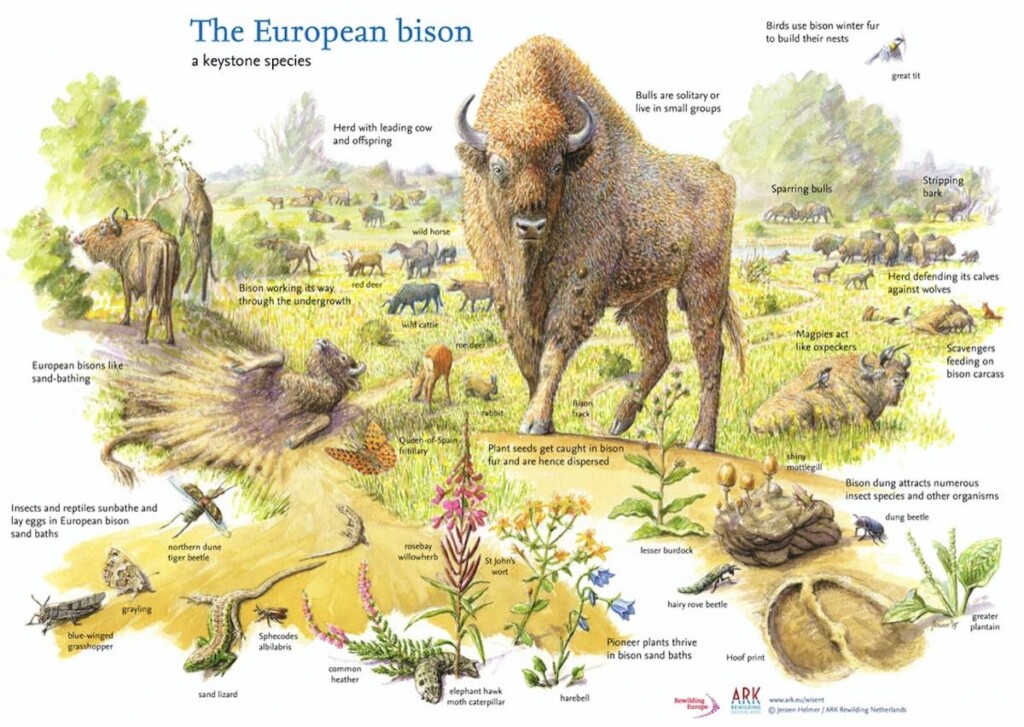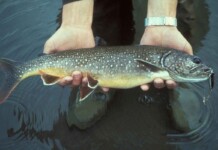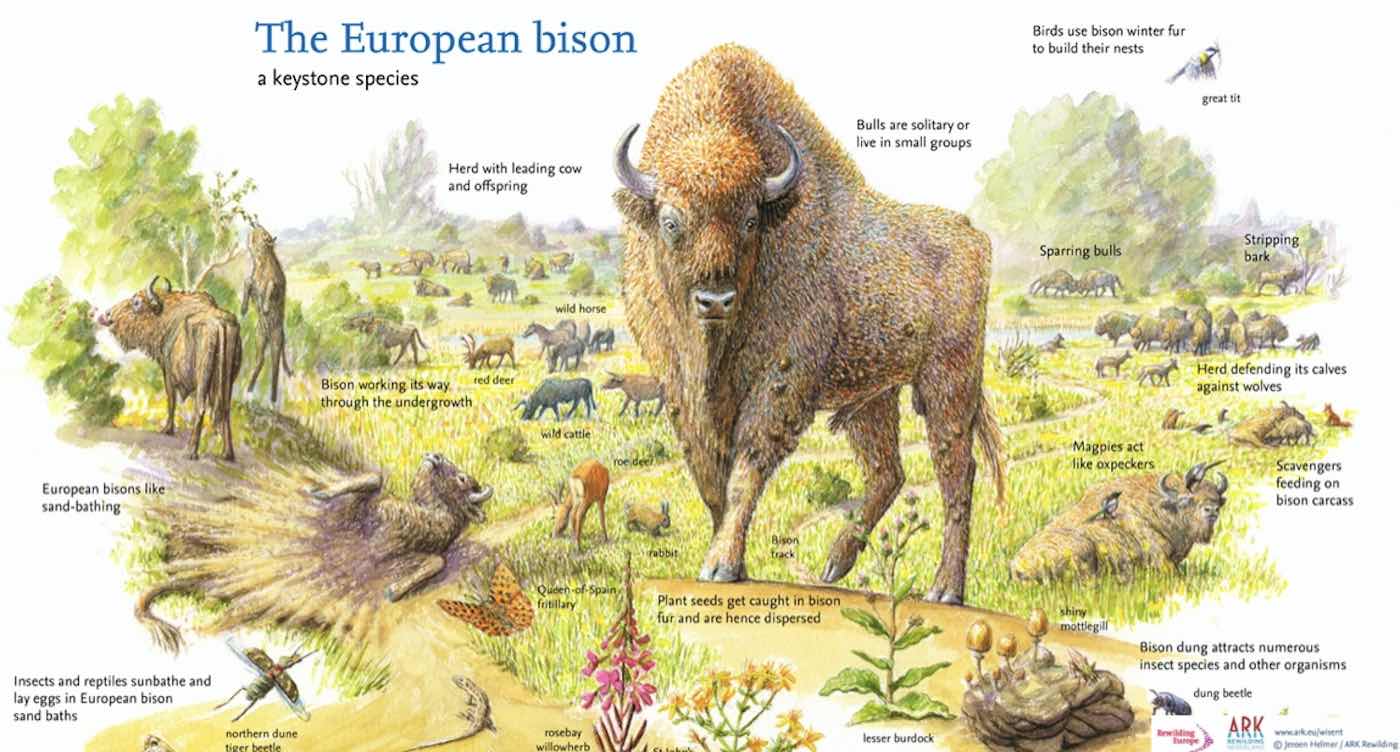
A recent study that looked at the effects of European bison on the ability of forests in Romania to store carbon found that these large animals have a ‘heroic’ effect.
By increasing the carbon storage potential of forests by 10%, it’s the equivalent of taking 54,000 US gasoline-powered cars off the road—and there are only 170 animals.
In 2014, WWF Romania reintroduced a herd of European wood bison into the Țarcu mountains that has grown from 100 to 170 head. Rooting around in the woods, scrub, and fields for their fodder, rolling around on the ground, and stomping, breaking, and squishing the landscape up with their hooves, are all important ecosystem mechanisms that have been absent for decades.
As the graphic above depicts, bison epitomize the concept of a keystone species, one that holds the ecosystem together through their actions, whether it’s dispersing seeds caught in their fur, or creating patches of clear earth for lizards to sunbathe in.
The study, which hasn’t finished peer-review, was funded by Rewilding Netherlands. It used a model based on previous research published in April that looked at how large animals affect the carbon cycle.
Their findings were that a herd of 170 bison grazing in a 50 square kilometer habitat in the Țarcu mountains had the potential to open the landscape up to an additional 54,000 metric tons of CO2, although the ratio of uncertainty was high, and could be 55% more or less, than the 54,000 figure.
Taken as a median, it represents a 10% increase in the carbon-bearing potential of the landscape.
“These creatures evolved for millions of years with grassland and forest ecosystems, and their removal, especially where grasslands have been plowed up, has led to the release of vast amounts of carbon,” said Professor Oswald Schmitz of the Yale School of the Environment in Connecticut. “Restoring these ecosystems can bring back balance, and ‘rewilded’ bison are some of the climate heroes that can help achieve this.”
BISON BACK IN BRITAIN: Wild Bison Return to UK After Thousands of Years – And Are Ready to Tear S*!# Up
Grasslands might be more important for carbon storage than forests because of the much lesser degree to which grasslands decay. In a forest, trees and leaves are constantly decomposing, releasing both carbon and methane. Trees that die before reaching maturity will release much of the carbon they stored throughout their life.
Grasslands on the other hand incur very little decomposition, and the carbon they do store is constantly being tamped down by the hooves of grazing animals.
MORE STORIES LIKE THIS: First Baby Beaver in 160 Years Seen in S.F. Bay Area Exciting Scientists with Possibility of Recovery
Professor Schmitz and his team looked at nine different animals, including musk oxen, forest elephants, and river otters.
“Many of them show similar promise to these bison, often doubling an ecosystem’s capacity to draw down and store carbon, and sometimes much more,” Schmitz told the Guardian. “This really is a policy option with massive potential.”
SHARE This Amazing Potential For Bison To Change The Earth…





















Interesting, given that the American Bison is primarily a grassland animal. Still, a key species for the American prairie, devastated by settlers’ farming and ranching techniques.